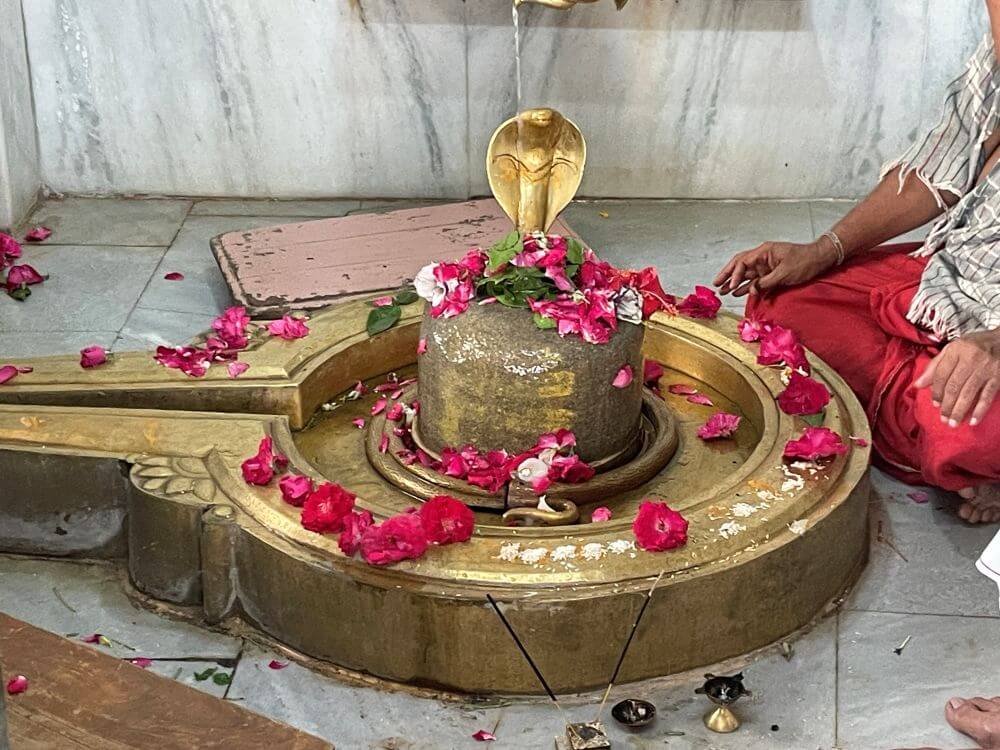
Situated at the confluence of the Narmada, Orsang and Gupt Saraswati rivers, Chandod (formerly known as Chandipur) is recognized as the “Dakshin Prayag” (Southern Prayag). It is here that the ancient Kapileshwar Mahadev Temple is located. According to local belief, the temple was established by Sage Kapil. Devotees believe that taking a holy dip in the Narmada River followed by worship of the awakened Shivling at the Kapileshwar Temple grants the spiritual merit equivalent to donating a cow (Godaan). This ancient temple holds great significance in the Narmada Parikrama, attracting thousands of pilgrims and devotees for ritualistic worship and abhishek (ceremonial bathing of the deity).
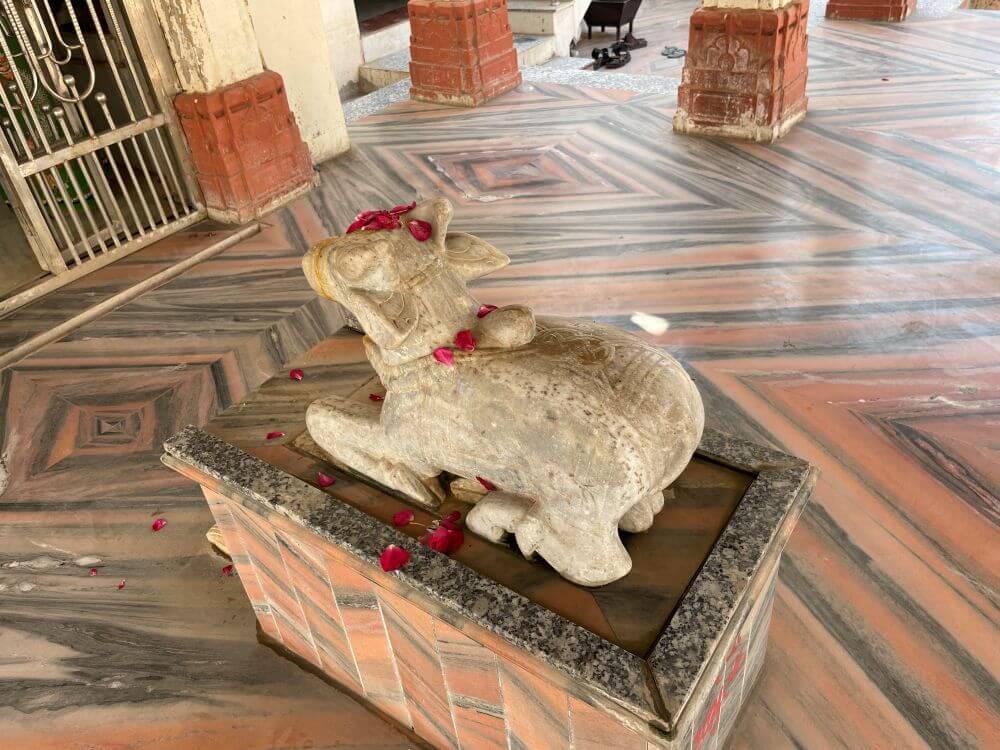 A legend related to the temple tells of King Sagar, who once organized an Ashwamedha Yagna (horse sacrifice ritual). Indra, the king of gods, stole the sacrificial horse and hid it at Sage Kapil’s ashram. King Sagar’s sixty thousand sons arrived at the ashram searching for the horse and, assuming that Sage Kapil had stolen it, disrupted his penance by insulting him. Enraged, Sage Kapil reduced them to ashes with his wrath. Later, repenting his actions, he came to the banks of the Reva (Narmada) River to atone through penance. After years of austerity, he installed a Shivling at this site, which became known as the Kapileshwar Mahadev Temple.
A legend related to the temple tells of King Sagar, who once organized an Ashwamedha Yagna (horse sacrifice ritual). Indra, the king of gods, stole the sacrificial horse and hid it at Sage Kapil’s ashram. King Sagar’s sixty thousand sons arrived at the ashram searching for the horse and, assuming that Sage Kapil had stolen it, disrupted his penance by insulting him. Enraged, Sage Kapil reduced them to ashes with his wrath. Later, repenting his actions, he came to the banks of the Reva (Narmada) River to atone through penance. After years of austerity, he installed a Shivling at this site, which became known as the Kapileshwar Mahadev Temple.
The 88th chapter of the Narmada Purana mentions the significance of Kapileshwar Tirtha, stating that it destroys all sins. 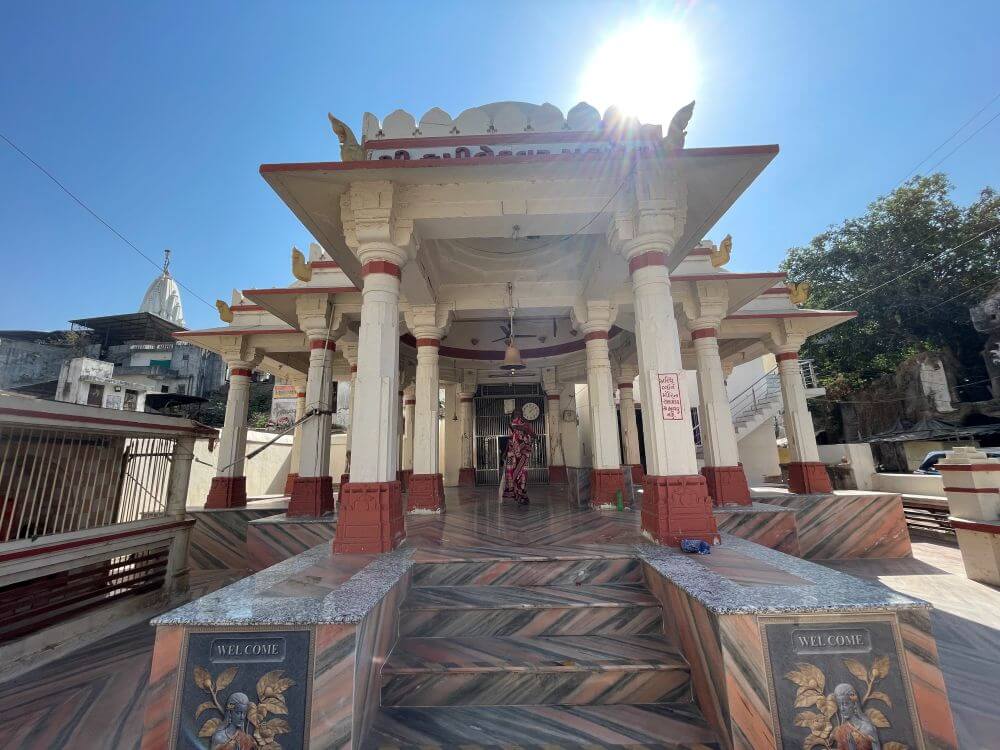 A person who overcomes anger and worships Mahadev here will not go to Yamaloka (the abode of death) or witness the horrors of ‘Asipatravan’ hell. According to mythological stories, Asipattravana is a type of hell. There, the ground is scorching hot for thousands of yojanas (a unit of measurement) and the leaves of the trees there are like swords. It is believed that Vasudevanand Saraswati (Tembe) Swami Maharaj, considered the fourth incarnation of Lord Dattatreya, visited this temple during his Chaturmas stay (four-month stay) in Tilakwada.
A person who overcomes anger and worships Mahadev here will not go to Yamaloka (the abode of death) or witness the horrors of ‘Asipatravan’ hell. According to mythological stories, Asipattravana is a type of hell. There, the ground is scorching hot for thousands of yojanas (a unit of measurement) and the leaves of the trees there are like swords. It is believed that Vasudevanand Saraswati (Tembe) Swami Maharaj, considered the fourth incarnation of Lord Dattatreya, visited this temple during his Chaturmas stay (four-month stay) in Tilakwada.
The village of Chandod is located at the Triveni Sangam (confluence of three rivers). Since the religious rituals performed after death at this triveni sangam (confluence of three rivers) are considered especially significant, various rituals are performed on this ghat throughout the year. 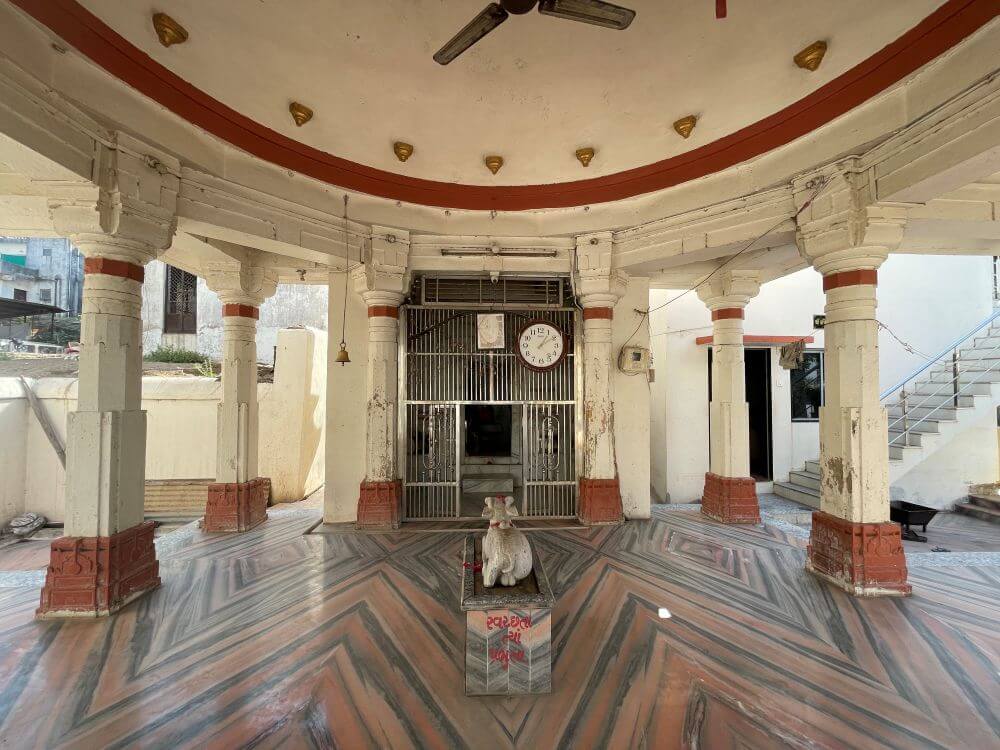 Among the total six ghats on this riverbank, the ‘Malharrao Ghat’ is famous. This ghat is named after the Maratha warrior and the father-in-law of Sadhvi (the virtuous) Ahilyabai Holkar. This ghat is about 60 feet wide and has 64 steps. There is also a legend about the construction of this ghat. In ancient times, a trusted minister of a king stole wealth from the royal treasury and fled. The king’s soldiers searched for him, but he was not found. After some days, the stolen wealth was found under a Tulsi vrindavan (sacred basil plant altar). Tulsi is considered sacred in Hinduism. Therefore, the king decided to use this wealth, found under the Tulsi vrindavan, for a noble cause. With this wealth, he built this ghat. This ghat, with its solid construction, is always bustling with activity.
Among the total six ghats on this riverbank, the ‘Malharrao Ghat’ is famous. This ghat is named after the Maratha warrior and the father-in-law of Sadhvi (the virtuous) Ahilyabai Holkar. This ghat is about 60 feet wide and has 64 steps. There is also a legend about the construction of this ghat. In ancient times, a trusted minister of a king stole wealth from the royal treasury and fled. The king’s soldiers searched for him, but he was not found. After some days, the stolen wealth was found under a Tulsi vrindavan (sacred basil plant altar). Tulsi is considered sacred in Hinduism. Therefore, the king decided to use this wealth, found under the Tulsi vrindavan, for a noble cause. With this wealth, he built this ghat. This ghat, with its solid construction, is always bustling with activity.
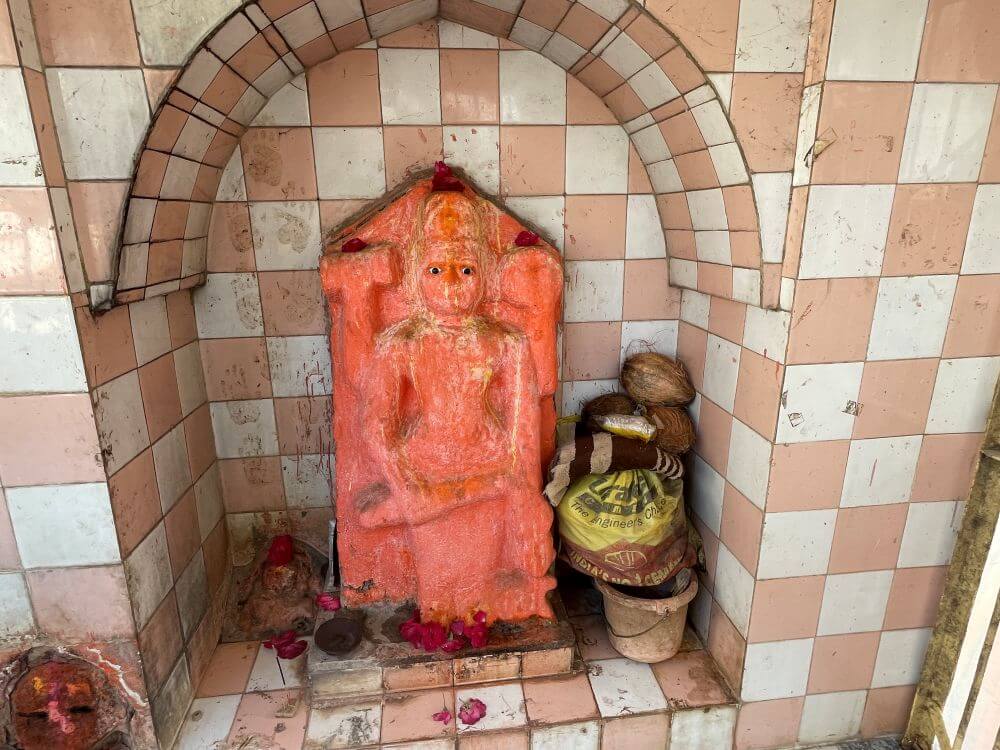 A short distance from the Narmada ghats, the Kapileshwar Mahadev Temple is situated along a narrow village road. To the left of the temple is an ancient tower (minar). The temple is constructed on a raised plinth and includes a main hall (sabhamandap), three-sided porch (mukhamandap), an vestibule and the sanctum sanctorum (garbhagriha). Both the porch and the main hall are topped with domed spires (shikharas). Except for the sanctum, the temple has no enclosing walls, making it an open structure.
A short distance from the Narmada ghats, the Kapileshwar Mahadev Temple is situated along a narrow village road. To the left of the temple is an ancient tower (minar). The temple is constructed on a raised plinth and includes a main hall (sabhamandap), three-sided porch (mukhamandap), an vestibule and the sanctum sanctorum (garbhagriha). Both the porch and the main hall are topped with domed spires (shikharas). Except for the sanctum, the temple has no enclosing walls, making it an open structure.
Upon entering the temple premises, a small shrine of Hanuman is located to the left of the main hall. After ascending five steps, one enters the porch. The sabhamandap is open and features a Nandi statue on a marble platform, with a tortoise idol placed in front of it. Within the vestibule are idols of the Serpent Deity (Nag Devta) and Ganesha. The sanctum houses a large oval Shivling on a raised Shalunka, covered by a serpent hood. From the water vessel (Galantika) in the upper part, the Pindi (Shivalinga) receives continuous abhisheka. Behind it, on the rear wall of the sanctum, is a shrine for Goddess Parvati.
Devotees can visit the temple from 7:00 AM to 8:00 PM. Several festivals, including Maha Shivaratri, are celebrated here with great devotion. Pilgrims on the Narmada Parikrama, as well as those visiting the Narmada ghats, make it a point to have darshan at this temple. Next to this temple is a smaller, ancient shrine dedicated to Hatkeshwar Mahadev.



